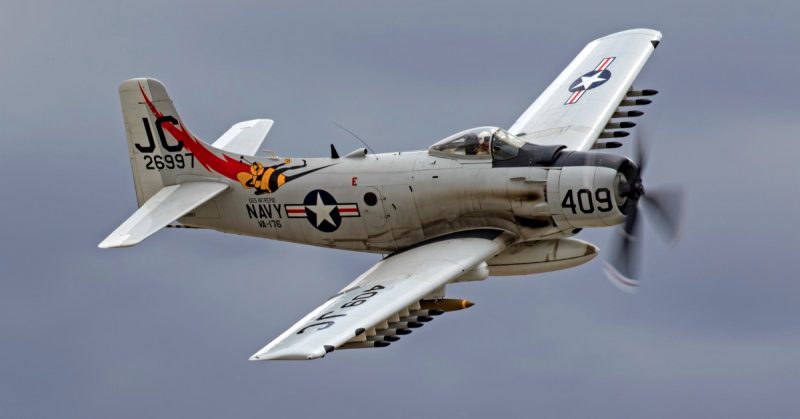The A-1 Skyraider was the last propeller-driven tail-dragger aircraft bought by the US Navy. One of the largest single engine aircraft ever built, the A-1 was built to a Navy requirement for a patrol/bomber/torpedo aircraft.
It was designed in 1944 by the Douglas Aircraft Company in California. Everything about the A-1 was oversized. It was almost comically large for a single engine aircraft, and had a crew of anywhere between 1 and 4 people depending on the variant.
The specified engine was the same massive Wright duplex cyclone used in the B-29, which gave the A-1 its massive payload capability.
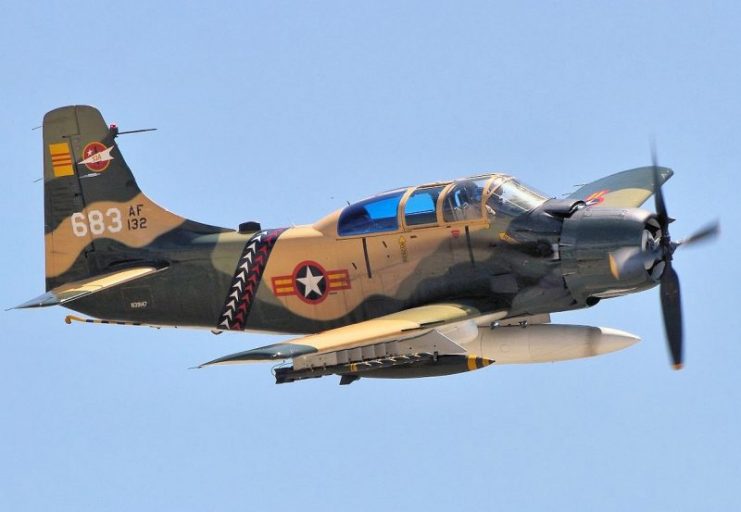
The A-1 could also perform carrier onboard delivery duties. In addition to the US Navy, it would go on to see service with not only the US Air Force but also with various other allied air forces.
It was flown by the French Air Force before they left Indochina and also saw heavy use by South Vietnamese forces. When Saigon fell, the planes that could be flown out went to bases in Thailand where they were used for several years after.
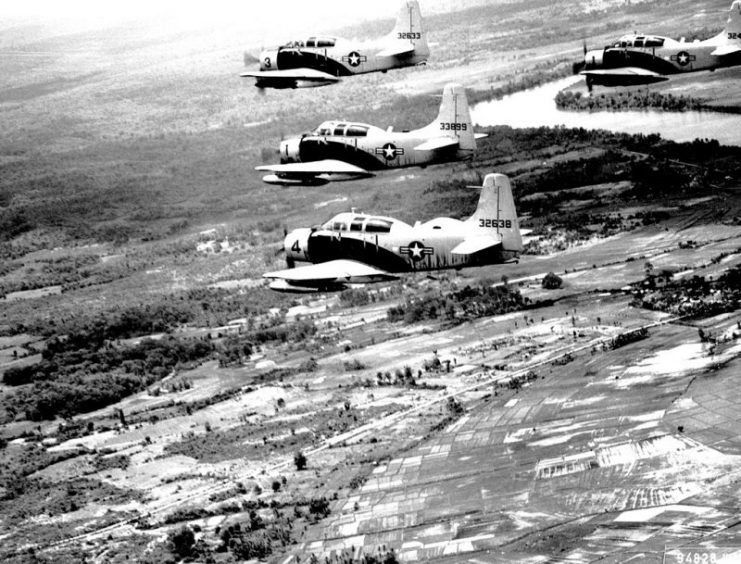
The A-1 served a special role in the Vietnam War, and would earn its greatest fame as the guardian angel of Vietnamese pilots. Although it was originally developed as a carrier heavy attack aircraft and bomber, the A-1 saw the majority of its action as a ground attack aircraft used to assist in the rescue of downed American pilots.
Special operations were conducted when a pilot was shot down. As soon as his distress call was received the rescue plan was set into action. Army helicopter gunships would escort the main rescue helicopter. Orbiting around these helicopters at low to medium altitudes was a special flight of A-1s.
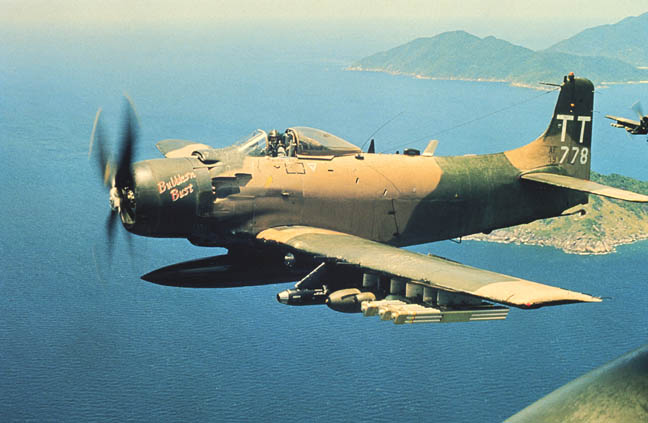
Known by their call sign “Sandy,” these flights of aircraft were tasked with suppressing any enemy resistance, especially AA guns. The lumbering, heavily-armored A-1s could handle far more punishment than the delicate by comparison helicopters. A-1s were capable of shrugging off hits from enemy machine guns, cannons, and even missiles in some cases.
A-1 Sandy pilots would intentionally fly low and slow to entice the enemy into firing so they could be attacked. Once an enemy position revealed itself, it would face the full brunt of an A-1’s power.
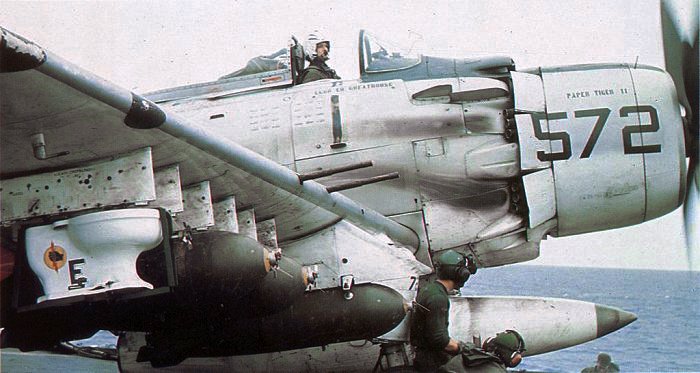
The A-1 was exceptionally heavily-armed for its size. Each aircraft carried four 20mm cannons, rockets, napalm canisters, and cluster bombs as well as standard bombs.
A-1s could carry more payload than a World War II B-17 bomber when fully loaded. For rescue missions they would often carry a load of rockets as well as numerous napalm canisters and cluster bombs.
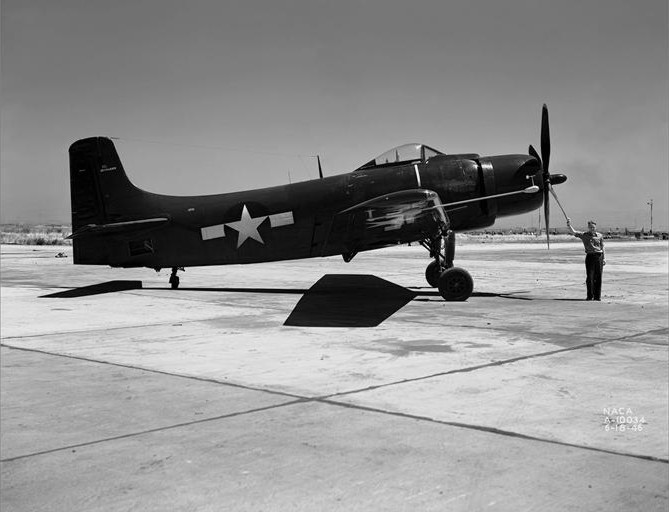
However, there is a famous photograph of a Sandy being launched from a carrier with a far stranger payload. Due to a bomb shortage, some planes were being launched only half-loaded with ordnance.
Enterprising naval ordnancemen created their own special bomb for Hanoi. Equipped with tail fins and a fuse, the bomb was made of a decommissioned toilet, complete with bomb shackles so it could be dropped from the sky. Unfortunately there is no record of how much damage was caused by the that special mission.
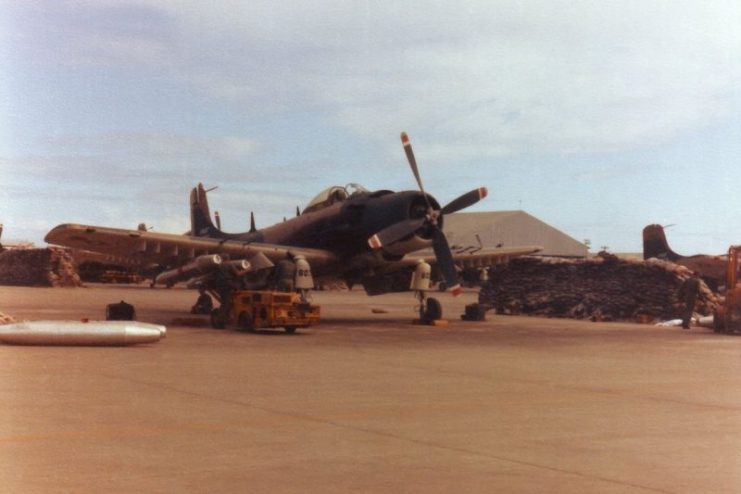
A-1s amassed an impressive record during their comparatively short careers. Their pilots became experts at close range air support, frequently dropping their payloads within yards or in some cases even feet of downed airmen or trapped infantry.
Another Sandy specialty was basically creating a firebox around a downed pilot by dropping criss-crossing strings of napalm and cluster bombs. No enemy forces would be allowed to penetrate these perimeters by the orbiting A-1s.
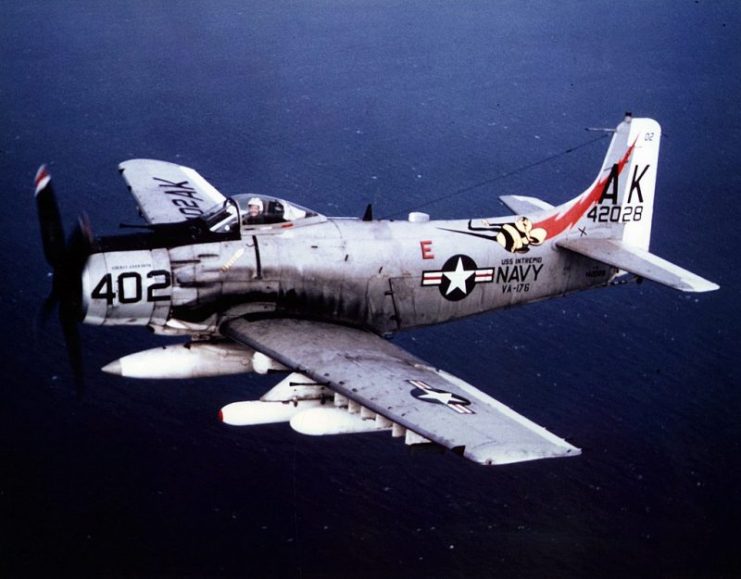
A-1s also hold several records for important firsts and lasts among combat aircraft, aside from the previously mentioned status as the last prop-driven tail-dragger.
For example, the A-1 can claim the first MiG kill of Vietnam. An A-1 pilot successfully used his cannons to shoot down a MiG. This happened several times throughout the war, and qualifies as the last jet kills by a propeller driven aircraft.
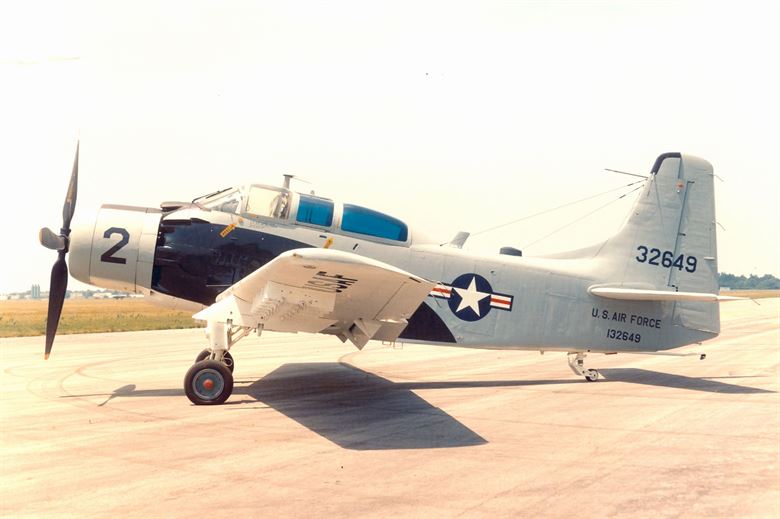
It is an ironic fact and perhaps a tragedy of military history that the A-1 Skyraider was retired so quickly following the Vietnam War. The United States, especially within the last twenty years of low intensity insurgency warfare, had a definite usage for a low-speed heavily armored aircraft capable of carrying a large amount of bombs and loitering over the battlefield like the A-1 could.
The closest modern alternative is the mighty A-10 Warthog. A worthy successor to the A-1, the A-10 is basically a flying tank. The A-10 does an excellent job at close air support, but is very expensive to operate in comparison to a prop-driven aircraft.
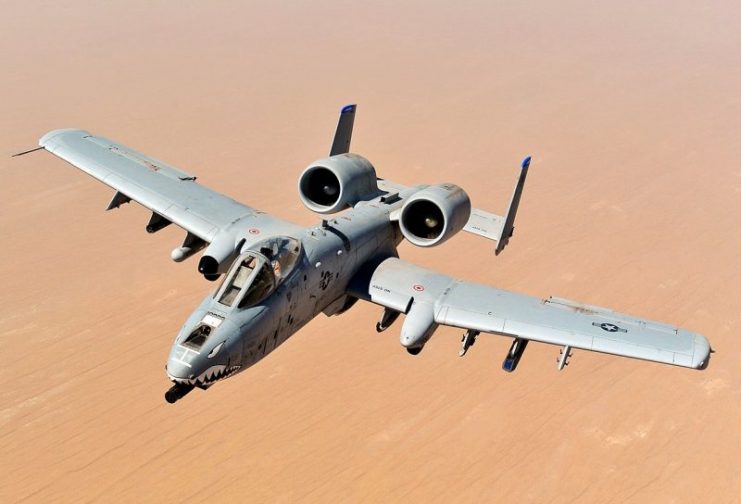
The US Air Force has been conducting numerous trials since the early 2000s to find a low cost long endurance aircraft with the previously described qualities of the A-1.
Perhaps a good idea for the Air Force would be to look back at its history and consider an updated A-1 as a candidate. Perhaps the roar of the Wright Cyclone could once again be heard, screaming down to protect American servicemen.
